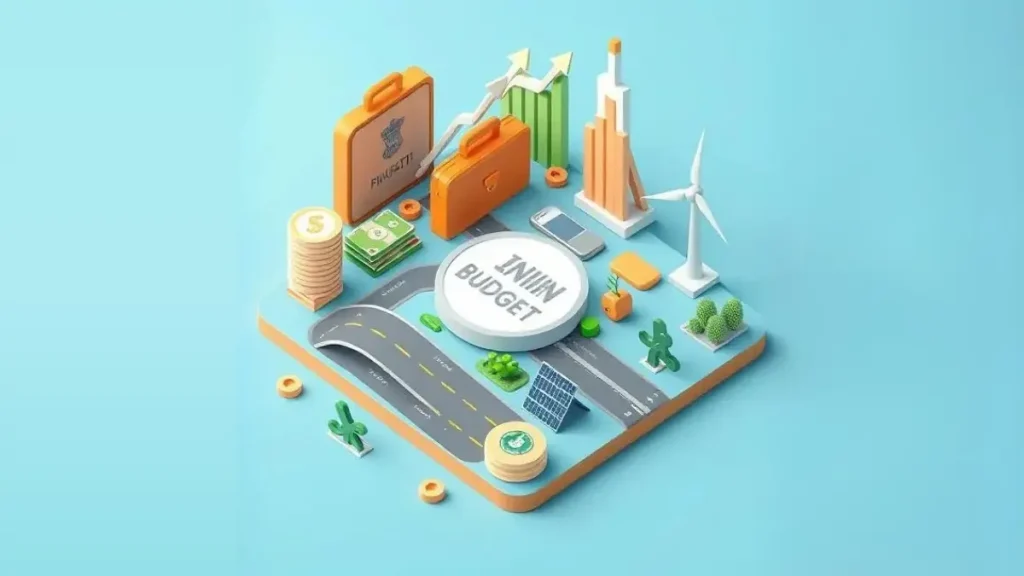Since assuming office in 2014, Prime Minister Narendra Modi’s government has presented a series of Union Budgets that have significantly shaped India’s economic landscape. These budgets, presented by Finance Ministers Arun Jaitley (2014-2019) and Nirmala Sitharaman (2019-present), have introduced groundbreaking reforms, including the Goods and Services Tax (GST), focused on infrastructure development, and aimed at fostering a digital and self-reliant India. Here is an overview:
The Arun Jaitley Era (2014-2019): Laying the Foundation for Reform
2014-15: A New Beginning
Arun Jaitley’s first budget in July 2014 set the tone for the Modi government’s economic agenda. Key highlights included:
- Focus on Infrastructure: Allocation of ₹37,880 crore for road and highway projects.
- Make in India Initiative: Launched to boost manufacturing and create jobs.
- Tax Reforms: Introduction of the Direct Taxes Code to simplify tax laws and increase compliance.
- Fiscal Discipline: Commitment to reducing the fiscal deficit to 3% of GDP by 2017.
2015-16: Building Momentum
This budget focused on revitalizing the economy through:
- Corporate Tax Reduction: Phased reduction of corporate tax from 30% to 25% over four years.
- Startup India Initiative: Tax exemptions and funding support for startups.
- Social Security Schemes: Launch of the Atal Pension Yojana and Pradhan Mantri Jeevan Jyoti Bima Yojana.
2016-17: Bold Moves and Demonetization
One of the most talked-about budgets, it included:
- Demonetization: Announced in November 2016, aimed at curbing black money.
- Rural Focus: Doubling farmers’ income by 2022 and increased allocation for rural development.
- Digital India Push: Incentives for digital payments and financial inclusion.
2017-18: GST Takes Center Stage
This budget marked a historic moment with the introduction of the Goods and Services Tax (GST) on 1st July 2017. Key announcements included:
- GST Implementation: A unified tax regime replacing multiple indirect taxes.
- Affordable Housing: Infrastructure status for affordable housing projects.
- Railway Modernization**: Allocation of ₹1.31 lakh crore for railway infrastructure.
The Nirmala Sitharaman Era (2019-Present): Navigating Challenges and Driving Growth
2019-20: A Vision for a $5 Trillion Economy
Nirmala Sitharaman’s maiden budget focused on:
- Infrastructure Development: ₹100 lakh crore investment over five years for infrastructure projects.
- Ease of Living: Tax benefits for affordable housing and electric vehicles.
- Startup Boost: Tax exemptions for startups and angel investors.
2020-21: Responding to Economic Slowdown
This budget aimed at reviving growth through:
- Agriculture Reforms: Allocation of ₹2.83 lakh crore for agriculture and rural development.
- New Tax Regime: Introduction of an optional lower tax regime with reduced rates.
- Education and Skill Development: Focus on online education and skill training.
2021-22: Post-Pandemic Recovery
Presented amid the COVID-19 pandemic, this budget focused on:
- Healthcare: Allocation of ₹64,180 crore for healthcare over six years.
- Privatization: Plans to privatize two public sector banks and one insurance company.
- Infrastructure Push: Launch of the National Infrastructure Pipeline (NIP) with 7,400 projects.
2022-23: Building a Self-Reliant India
Key highlights included:
- PM Gati Shakti Plan: ₹20,000 crore allocation for multimodal connectivity projects.
- Digital Rupee: Introduction of a Central Bank Digital Currency (CBDC).
- Green Energy: Focus on renewable energy and electric vehicles.
2023-24: Inclusive Growth and Innovation
This budget emphasized:
- Capital Investment: Record allocation of ₹10 lakh crore for infrastructure.
- Agriculture and Rural Development: Increased funding for farmer welfare schemes.
- Tech and Innovation: Support for AI, 5G, and semiconductor manufacturing.
2024-25: Towards a Developed India
The latest budget focused on:
- Youth and Education: Expansion of IITs and IIMs, and skill development programs.
- Healthcare: Coverage for 1 crore gig workers under Ayushman Bharat.
- Green Growth: Allocation of ₹35,000 crore for energy transition projects.
Box Matter: Key Achievements of Modi Government Budgets
- GST Introduction: Unified tax regime simplifying indirect taxation.
- Make in India: Boost to manufacturing and job creation. Digital India: Promotion of digital payments and financial inclusion.
- Infrastructure Development: Massive investments in roads, railways, and urban infrastructure. Social Security Schemes**: Launch of schemes like PM-KISAN, Ayushman Bharat, and Atal Pension Yojana.
In all, the Union Budgets presented under Narendra Modi’s government from 2014 to 2025 have been transformative, focusing on economic reforms, infrastructure development, and social welfare. The introduction of GST, emphasis on digital India, and commitment to fiscal discipline have been hallmark achievements. While challenges like the COVID-19 pandemic and global economic slowdown have tested the government’s resolve, the budgets have consistently aimed at fostering inclusive growth and building a self-reliant India. As the country moves towards its vision of becoming a $5 trillion economy, these budgets will be remembered as pivotal in shaping India’s economic future.


